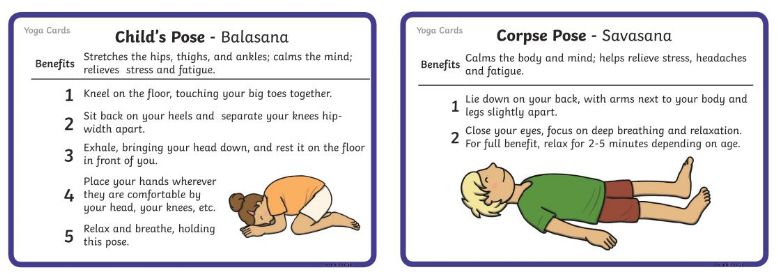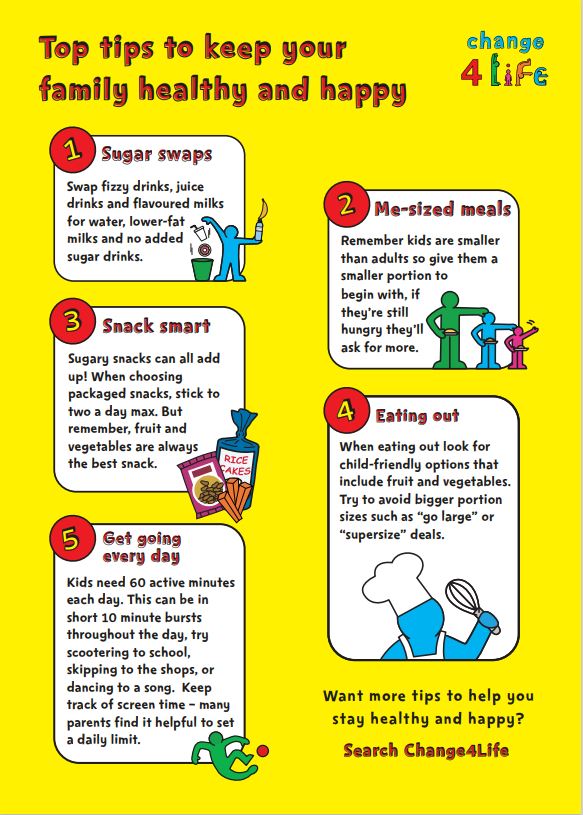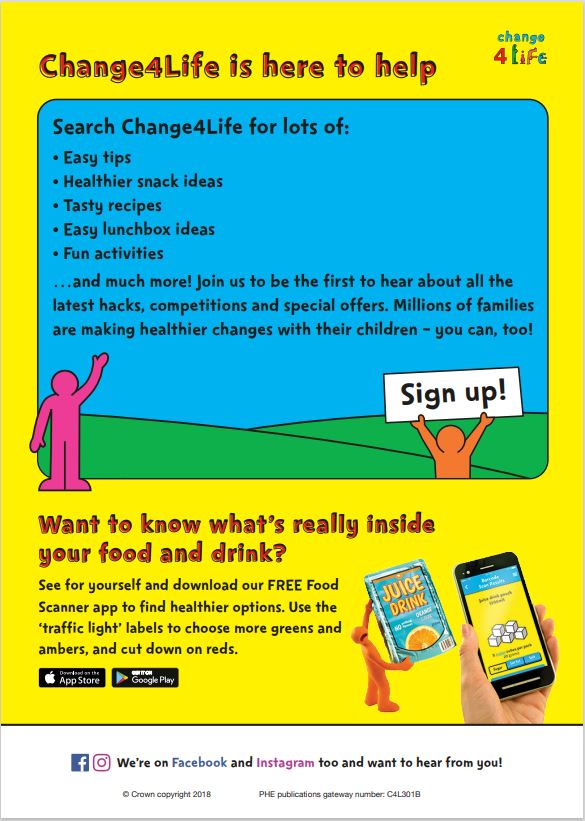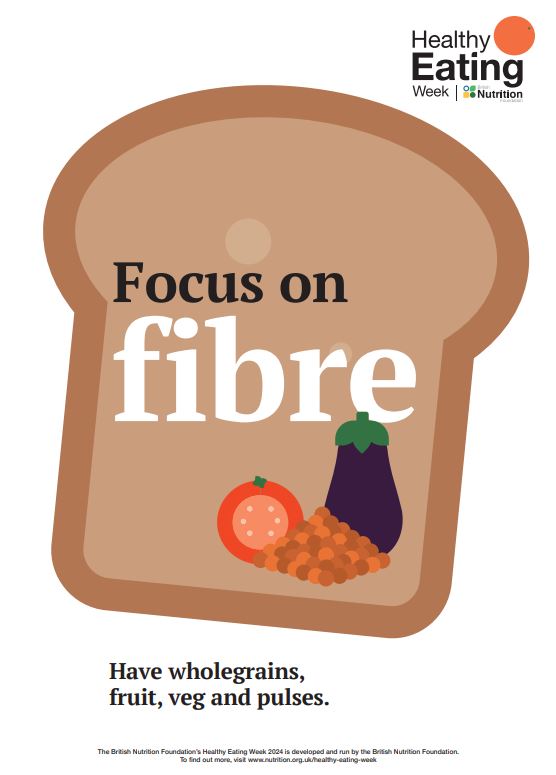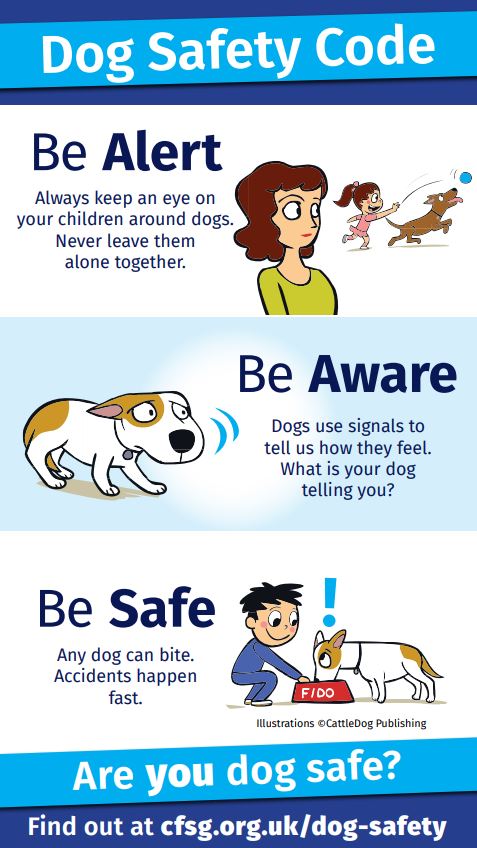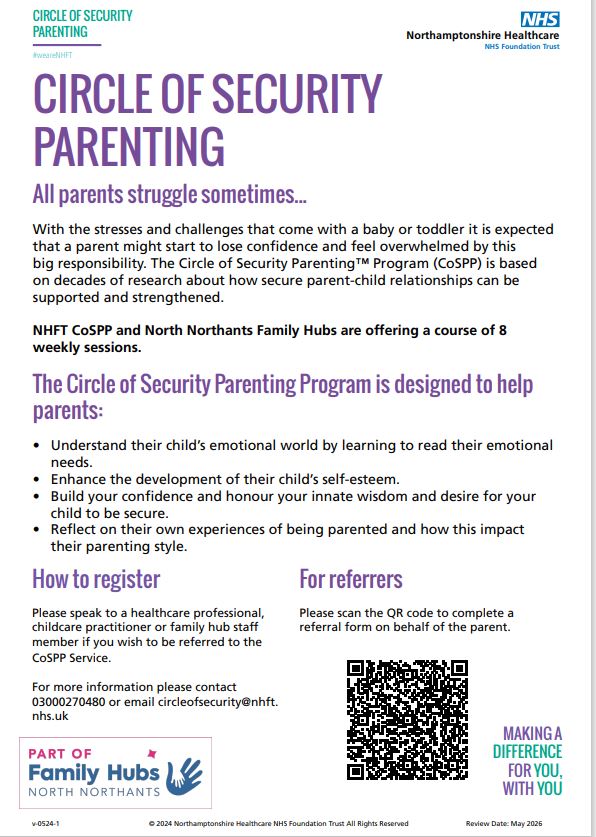- Home
- Parents & Carers
- Family Support, Pastoral Care and Well-being & Mental Health
- Help and Guidance for Parents/Carers of Children & Young People
Help and Guidance for Parents/Carers of Children & Young People
Health Information for Reception Children
Northamptonshire Healthcare and the school nurse team have created a page which has health information aimed at children in the Reception year, and younger. This can be found using the link Three to five years old
The page covers areas including minor illnesses, sleep, safety, toileting etc.
Why is getting a good night's sleep so important?
Getting sufficient sleep has been shown to benefit memory, learning, attention, mood, behaviour and physical health. How many hours does your child need?
How many hours does your child need?
| Age | Hours of sleep |
| Pre-school (3 - 5 years) | 11 - 13 |
| 5 - 9 years | 10 - 11 |
| 10 - 14 years | 9 - 9.75 |
| 15 - 17 years | 8.5 - 8.75 |
| Adults | 7 - 9 |
Information from National Sleep Foundation and NHS Choices
Find out more
Children and Sleep | Sleep Foundation
Promoting Sleep
Exercise and activity
Exercise during the day is important to help us sleep but discourage lots of activity right before bedtime. Exercise affects our body temperature and the best time to exercise to promote sleep is 4 - 6 hours before sleep.
Diet
A healthy balanced diet promotes good sleep. A large meal too close to bedtime will interfere with sleep. If your child has a snack before bed, carbohydrates such as bread or cereal are good options. Monitor your child’s sleep to consider how different foods may be affecting their sleep. Environment Create a good sleeping environment for your child. Their bedroom should be calm, dark, quiet and cool. A night-light may help children feel safer. Do not allow your child to watch TV or play computer games whilst falling asleep. These activities stimulate children and therefore do not promote sleep.
Reward
Give your child lots of praise for accomplishing even small things as they develop better sleep habits.
Bedtime routine
Establishing a bedtime routine is crucial in supporting your child to sleep well. Here are some hints on creating a good bedtime routine. Decide on a bedtime and stick to it. Weekends and holidays may have more flexibility. Don’t extend the routine or make exceptions. Make sure that this routine is the same every night and praise your child for completing the tasks. It may be helpful to have the routine written down or in picture format to help guide your child. A bath 30 minutes before bed can help to promote sleep.
Avoid activities that make your child excited (playing active games, watching TV, computer games etc.)
Begin bedtime routine at least half an hour before bedtime. Some children take longer to wind down than others, so give plenty of time. Bedtime routines may take longer for children who have ADHD.
✓ Give a “heads up” that the routine is about to begin 30 minutes before the start of the routine.
✓ Give countdown reminders as required. This will make it easier for your child to begin the routine rather than if they are abruptly interrupted in the middle of an activity.
✓ Build a bedtime routine of 4 to 5 activities. Activities should be things that prepare your child for bed e.g. brush teeth, put pyjamas on.
✓ As a reward for completing the routine, whatever time is left before the set bedtime is time for the two of you to have 1:1 time. This may be reading a story together or talking.
✓ Tell your child it's time for sleep and say goodnight.
✓ It can be helpful to have the same phrase used every night to act as a cue for the expected behaviour.
What if my child frequently wakes up during the night?
Night time waking is normal as a temporary stage. If this problem persists, talk to your doctor.
• Don’t go into the child’s room unless you must, for example, if they are really upset.
• Assume that the child has to go to the bathroom and steer them that way. Be gentle and quiet. Try not to put any lights on as they wake us up.
• Do not talk to them as engaging or show emotion as engaging them in conversation will waken them more.
• If your child wakes from a nightmare, then provide reassurance to help settle them back to sleep but do not engage in conversation
What happens if my child keeps getting out of bed?
Children will create reasons for having to get out of bed. Usually, this is because they are either scared, bored or both.
If a child gets out of bed, the longer they stay up and the further away they get from their bedroom, the more reinforcement they will get from this behaviour. Therefore, it is important to stop them as soon as possible and do not talk or show any emotion.
• Ensure that the bedtime routine covers reasons for getting up like being hungry or thirsty.
• If your child has difficulty falling asleep without you, sit in a chair in the room and gradually move further away until you are outside of the room.
• Consider the use of reward charts for staying in bed but remember that there is a long delay in this reward as it would be used the next morning and therefore, is likely to be more effective with older children.
Find out more
This website teaches young people about meditation and mindfulness. This can be a helpful coping skill if they feel overwhelmed or unable to control strong thoughts and feelings. Users can sign up for free and take part in guided mediation and mindfulness sessions.
Bedtime and Wind-down Activities
After a day in which there may be a new or different routine, or perhaps even no routine, a calm bedtime can be harder to achieve. Use these wind-down ideas with your children to help create the calming atmosphere needed for a happy bedtime, leading to a good night’s sleep.
Some of the activities can even be useful for adults too.
- After teatime, get into the habit of doing a quiet activity together with your children, such as colouring or a jigsaw. While you do this, quietly chat about your day. This can be a lovely time to reflect on those aspects of the day that you have most enjoyed.
- Working together, turn so one of you is facing away from the other. Ask your child to close their eyes and concentrate on the shapes that you are going to draw on his or her back with your finger. After one minute, swap over so that your child can have a turn drawing shapes on your back. Each time, really concentrate on what you can feel, making slow, gentle but deliberate movements.
- With a pencil and a piece of paper each, take the pencil for a walk on the page for one minute. Move it slowly around the page smoothly and randomly, focusing on the shapes being created the whole time. Try not to let the pencil or pen leave the page until the time is up.
- Together, place your hands on your stomachs, close your eyes and focus on your breathing for two minutes, simply noticing the rise and fall of your stomachs as you breathe in and out.
- It can be nice to prepare for bed by having a warm, relaxing bath.
- Enjoy a bedtime story with your child, then snuggle down and drift off to sleep.
Yoga Ideas to Promote Relaxation and Sleep
Yoga can be done at any time or anywhere. All you need is a carpeted floor or a mat with enough space to stretch out your arms and legs. Hold each pose for at least two breaths and always change sides when instructed to do so. Keep breathing, move slowly into the pose, never overstretch and if any pain is felt, stop immediately.
Breathing Exercises
Counting the Breath
This exercise helps to calm your mind and ease your mood!
As you know, we breathe all the time! But try thinking carefully about your breath. Notice how you breathe. You can put a hand on your tummy and one on your chest and see how the body is moved by the breath.
Next begin to breathe in and breathe out slower than you normally do, for longer than you normally do. Try breathing into your tummy and out. Then try breathing into your chest and out. Then close your eyes, and begin to count to 10 with your breath. Breath in 1, breath out 2, and so on up to 10. If your mind wanders and you forget to count, don’t worry, just drift your attention back to your breath and begin at 1 again.
This simple breathing exercise can be done sitting, lying down, or even walking around. Whatever feels right for you. After a short time, you will notice that you feel calmer, more at ease, and able to face any challenges that the day may have to offer.
Breathing Exercise - 4 - 7 - 8
This is another breathing exercise to help you feel relaxed and chilled!
Begin by noticing the breath. Breathe in through the nose and breathe out through the mouth. Start to slow the breath down a little bit and notice how it feels in your body.
Next start to count to 4 as you breathe in.
Now hold your breath and in a relaxed way count to 7.
Lastly, breathe out through your mouth as you count to 8 allowing the breath to sound like the ocean as you exhale.
Try sitting upright, with your back nice and long as you practice this exercise. Think about how it makes your body and your mind feel
Boosting your Child's Self-esteem
Did you know that random acts of kindness can boost your child's self-esteem?
When someone has low self-esteem they may start believing negative things about themselves that are untrue or exaggerated and this is really harmful to their wellbeing. Children can have low self-esteem, often brought on by comparing themselves to others. Unfortunately, this is more common than ever with the use of social media and the way children are often compelled to compare themselves to the images they see. As a result, they may think that they are useless, worthless, or incompetent. That they are of no value to anyone and cannot seem to do anything right.
As a parent, we can try to improve our children’s self-esteem by telling them that these negative thoughts are groundless, or by saying that they are truly loved, valued and can do certain things really well. This goes some way in helping to improve their ideas about themselves and create more positive self-talk. It is especially effective if we as parents, model a positive narrative about ourselves and speak aloud about the importance of noticing what we have done that has been good or successful.
On top of this, we can encourage our children to perform random acts of kindness. By doing things that are kind and appreciated by others, it challenges their belief that they are no good or worthless. If someone genuinely appreciates something that they have done and if they have made someone feel happier in some small way, then it allows them to see that they have done something nice. This shows them that they have do have the capacity to make someone's life just a little bit better. That they are actually worthy.
Simple acts such as smiling and saying good morning to someone, helping someone by picking something up for them or going upstairs for something someone has forgotten. Making a cup of tea or letting someone else in the family choose what to watch on TV. All seemingly small acts, but they will make someone feel joy. When children see that they have made someone feel joy, the feeling is projected back onto them. They feel joy too! They begin to see and believe that they are a good, capable, caring person. All of these emotions build self-positivity and enhances self-esteem. Important attributes to maintaining good mental health and wellbeing.
Toileting
Daytime Incontinence
Daytime bladder problems are common in children, especially in younger children after the potty training stage. Issues can range from:
- Sometimes needing to rush to the toilet (urgency),
- Doing lots of little wees (frequency),
- The occasional small accident or complete bladder emptying.
Bedwetting
Bedwetting in children in normal, many children under the age of five wet the bed. It can take some time for a child to learn to stay dry throughout the night.
Find out more
Bedwetting in children - NHS (www.nhs.uk)
ERIC is a national charity dedicated to improving children's bowel and bladder health. There is a large amount of information and advice for parents/carers.
Healthy Eating and Lifestyle
Research shows children who stay a healthy weight tend to be fitter, healthier, better able to learn, and more self-confident.
They're also much less likely to have health problems now and in later life.
Children whose parents encourage them to be active and eat healthily are more likely to stay a healthy weight and grow up healthy.


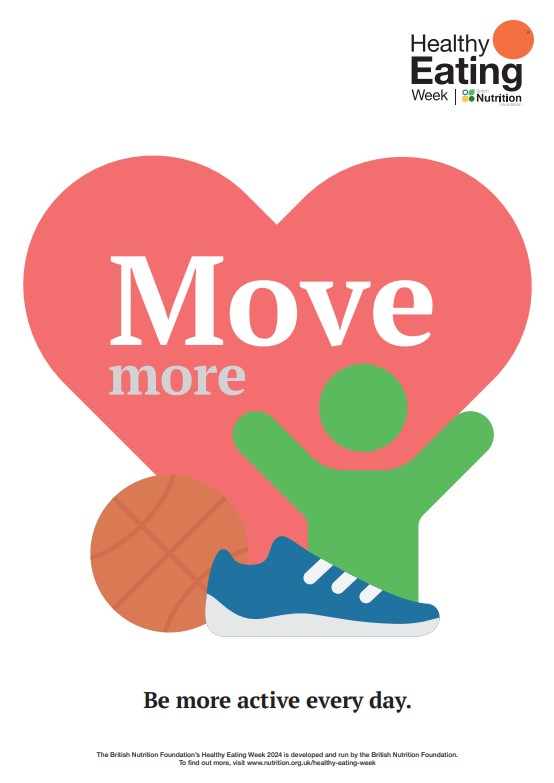
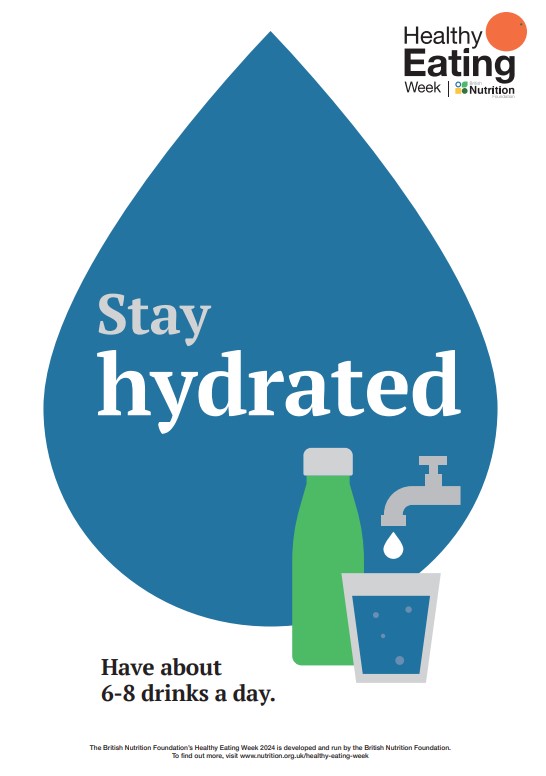

Find out more
Advice for parents of healthy-weight children - NHS (www.nhs.uk)
BEAT is the leading UK charity for supporting those with Eating Disorders. The website has lots of useful information about types of eating difficulties as well as a support helpline.
Get information and support - Beat (beateatingdisorders.org.uk)BBC Tiny Happy People
For healthy lifestyle to fitness motivation, age appropriate apps and platforms to empower children to develop healthy habits.
Apps to help kids get active | Internet Matters
Free ideas for activities and games, including the 10 minute Shake Up games plus information about active hobbies and sports.
Packed Lunch Guide
A healthy lunch box should;
- Be varied and consider the Eat Well guide - see below
- NOT CONTAIN any chocolate, sweets or other confectionery, including cereal bars and processed fruit bars
- Be packed by parents/carers AND children, they are more likely to enjoy it if they helped make it.
Only 1.6% of packed lunches meet nutritional standards and only one in five contains ANY vegetables.
Eat Well Guide
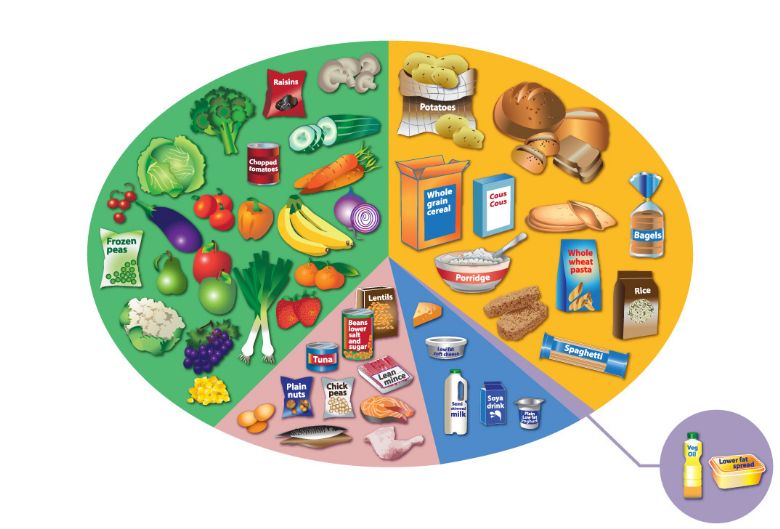
Key Lunch Box Components
- Sources of protein
- Carbohydrates
- Dairy and alternatives
- Fruit and vegetables
- Drinks
Top Tips
- Try having a school lunch at least once a week to add variety.
- Squeeze some lemon on fruit to keep it fresh
- A stronger tasting cheese means you will use less.
- Get creative with fruit-infused waters
- Choose wholegrain where possible
- Opt for low fat fillings like chicken/turkey
- Remember low fat usually means high sugar.
Find out more
Lunchbox ideas and recipes – Healthier Families - NHS (www.nhs.uk)
Head Lice
Head lice and nits are very common in young children and their families. They are not caused by dirty hair and picked up by head-to -head contact.
Find out more
Talk PANTS (Keeping your child safe from sexual abuse)
Developed in consultation with children, parents, carers and teachers, Talk PANTS is here to help children understand their body belongs to them, and they should tell a safe adult they trust if anything makes them feel upset or worried.
Talk PANTS is here to help children understand that they have a right to say no and if they need to speak out about something, someone will listen.
You can find out more and download the free resources on the NSPCC website. Penguin and Ladybird have partnered with the NSPCC to create a Pantosaurus book aimed at children aged 4 - 8 years.
The NSPCC has also partnered with a range of charities to help you talk to your child about the PANTS rules. There are a range of PANTS guides available from the website including guides for children with learning disabilities or autism and a BSL video for deaf children.
You can download the guide that’s right for you from our website, watch our Makaton or BSL Talk PANTS films and download free prompt cards to help you talk PANTS with Makaton.
Useful Resources and Links
Tiny Happy People is a website to help you develop your child's language skills. Explore the simple activities and play ideas and find out about babies and toddlers' amazing early development.
Resources for supporting you to get the best from family life.
Parent Zone | Family Links | Emotional Health Training (centreforemotionalhealth.org.uk)
We're here for you, whatever's on your mind. We'll support you. Guide you. Help you make decisions that are right for you. Our tips and techniques, ideas and inspiration, can help you feel more in control. And you can access them in your own time, at your own pace!
NSPCC offers advice and support for parents/carers on a wide range of topics.
Support & advice for parents | NSPCC
Childline has age-appropriate advice for primary school children on topics such as bullying. It has games and other interactive tools.

